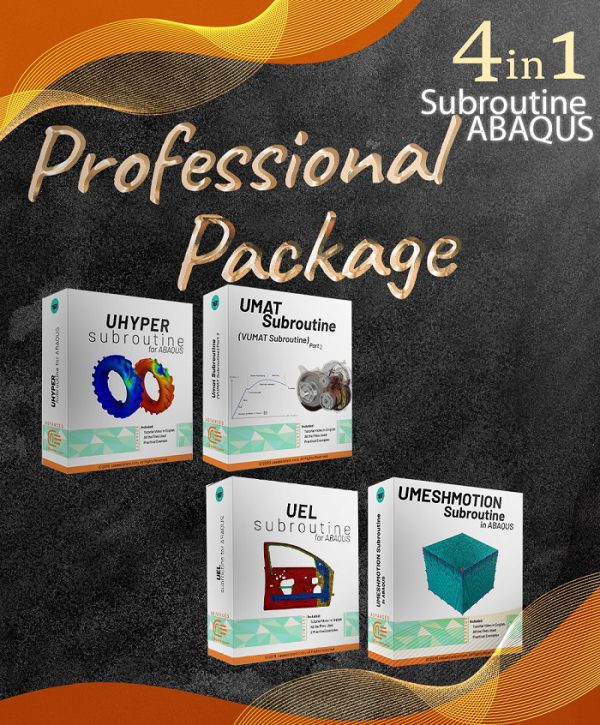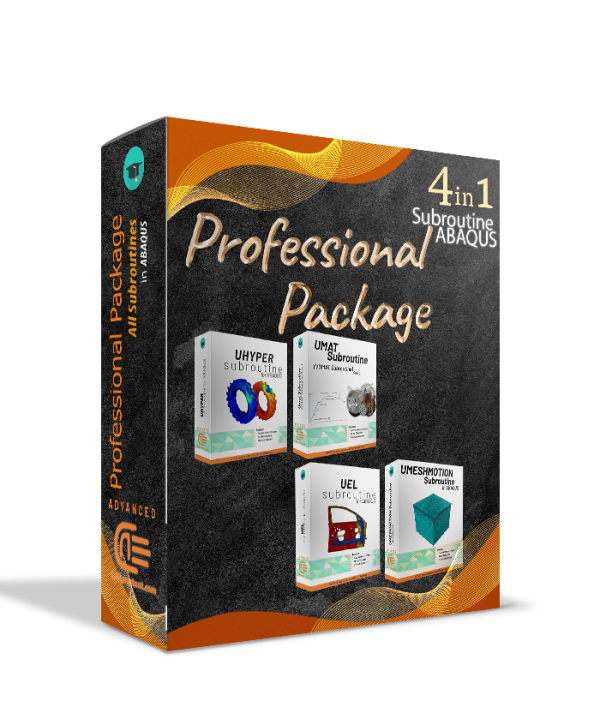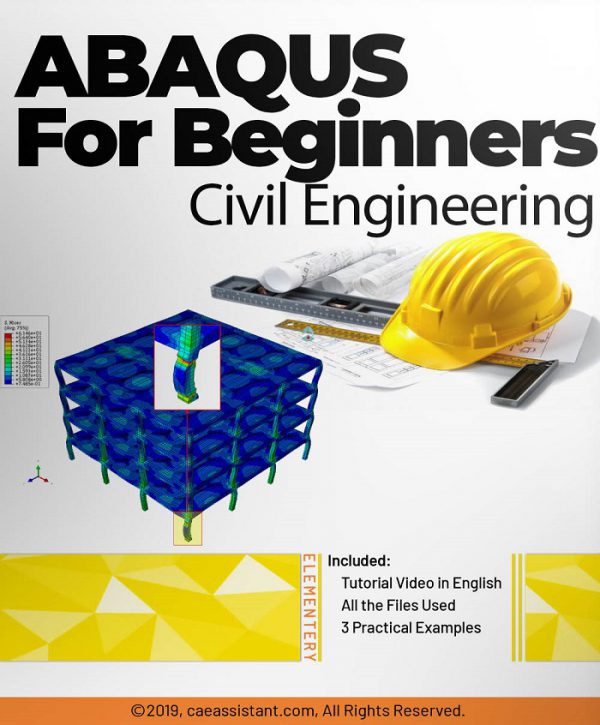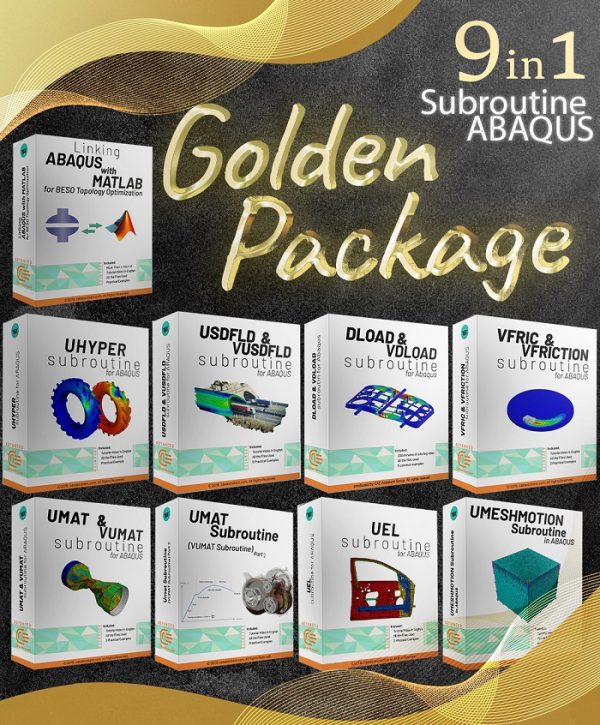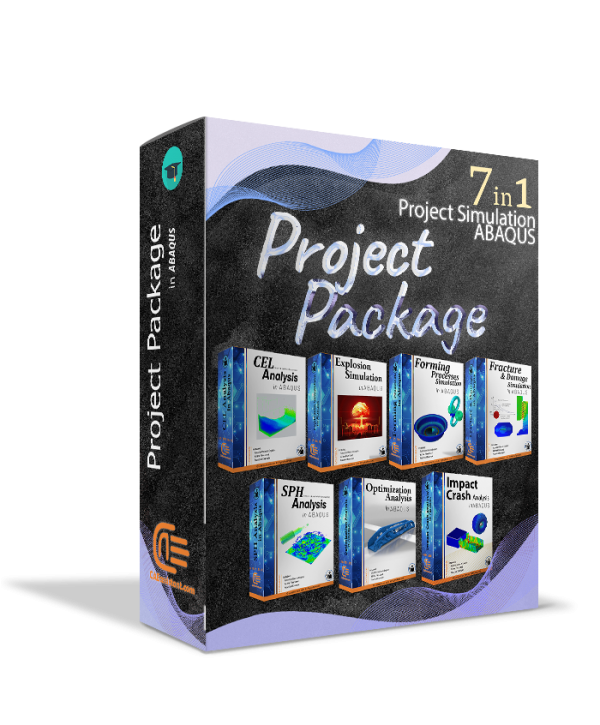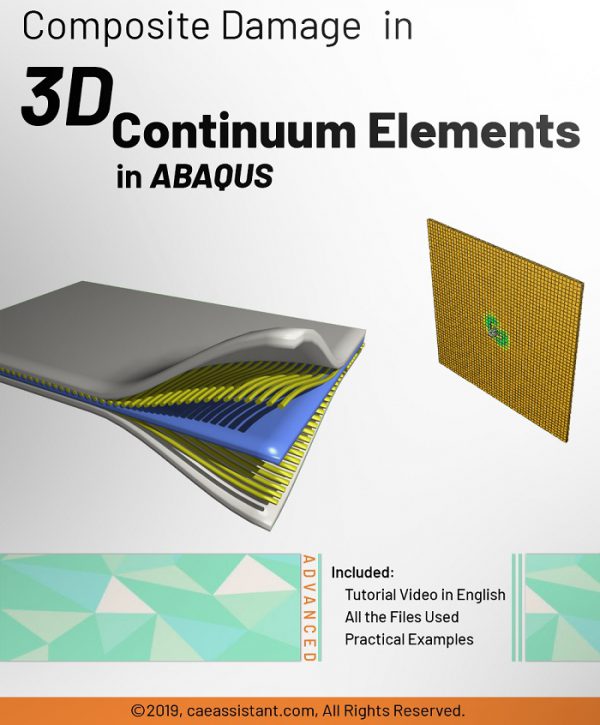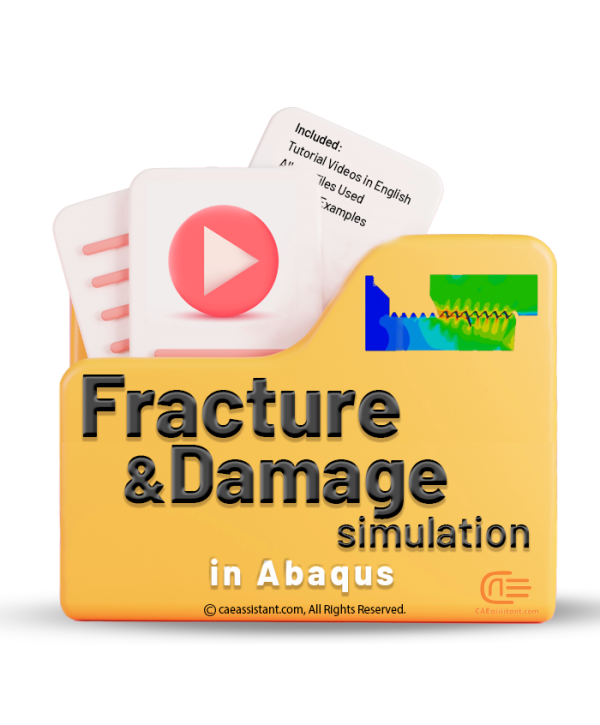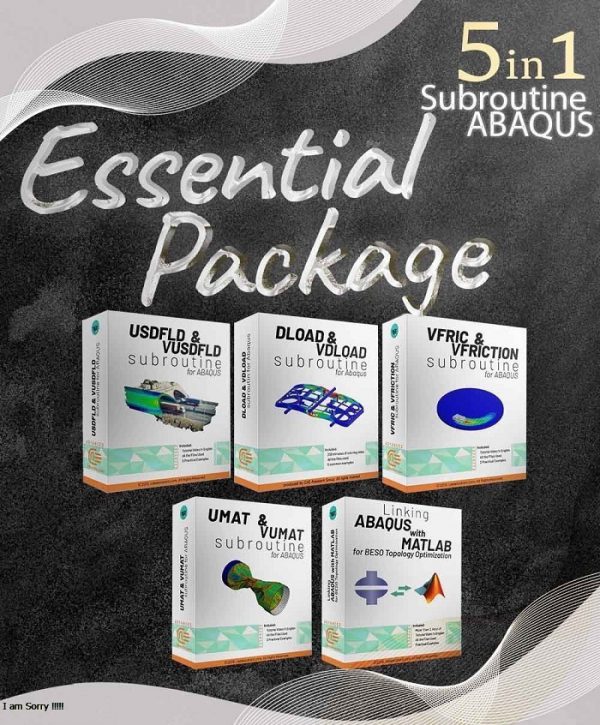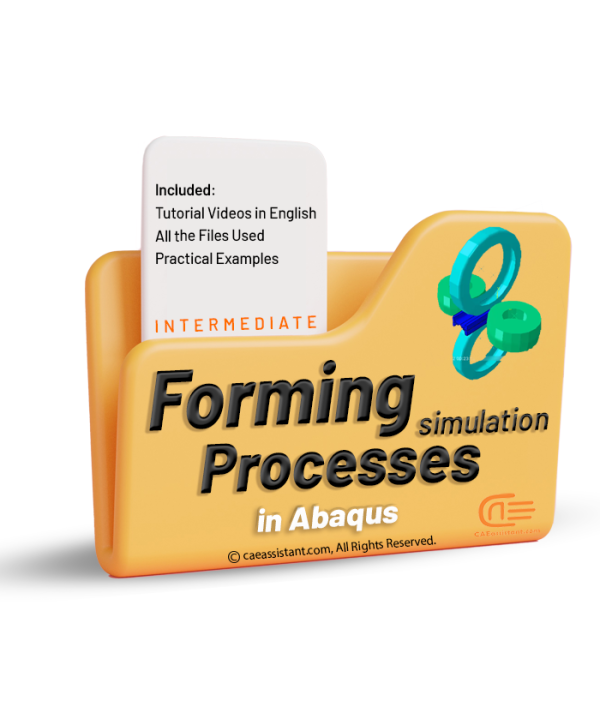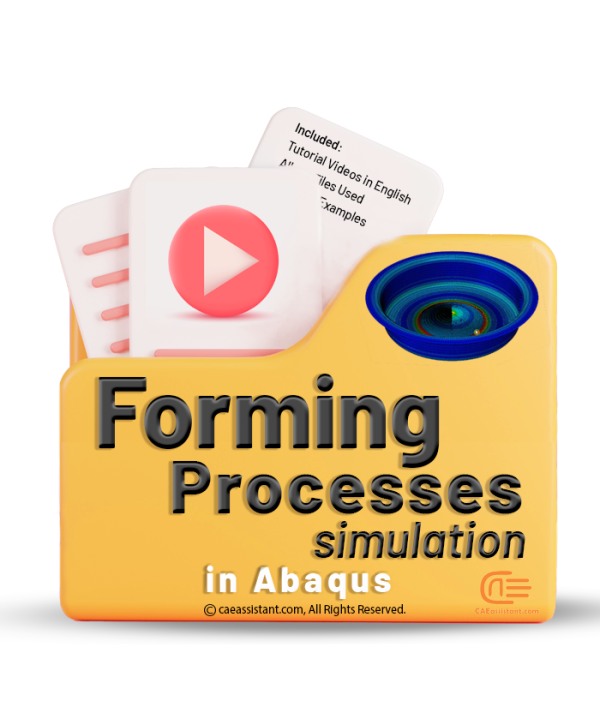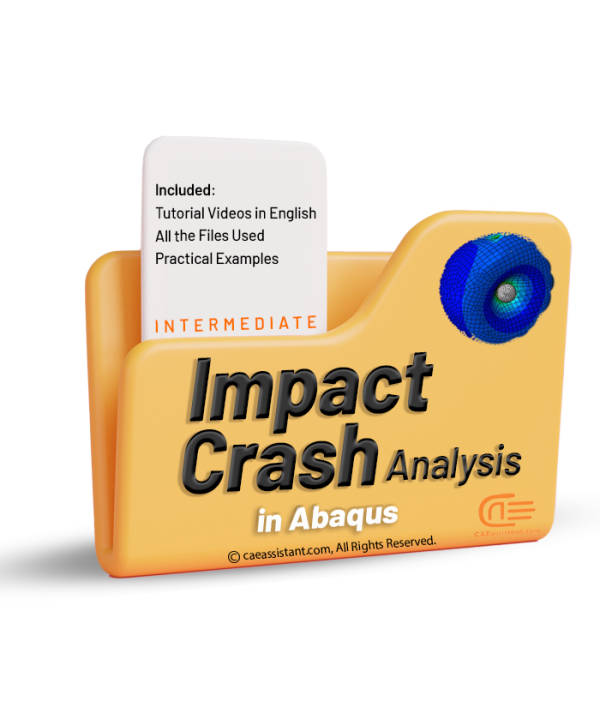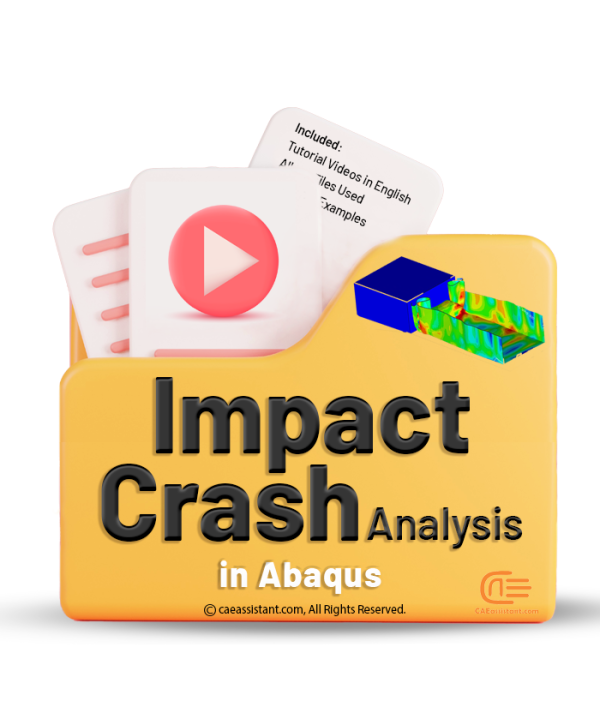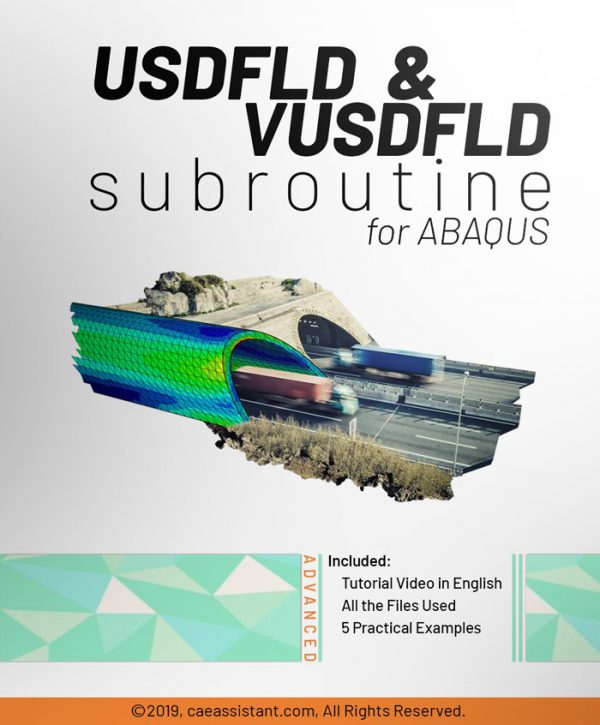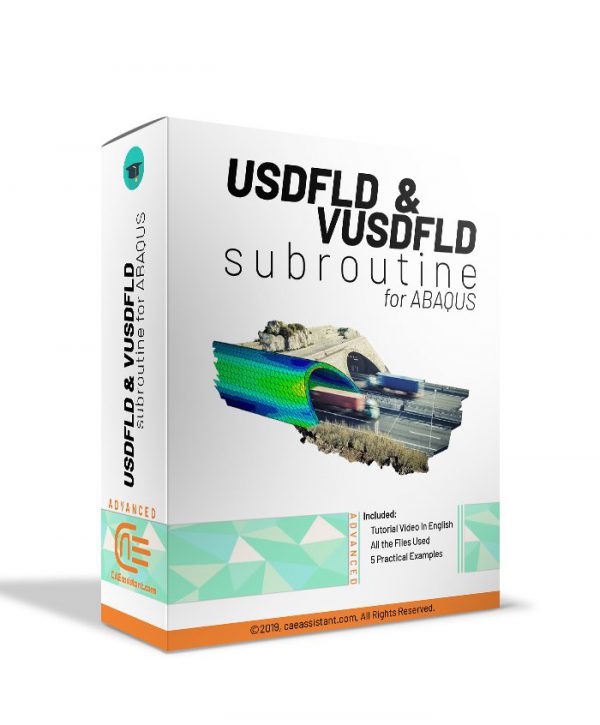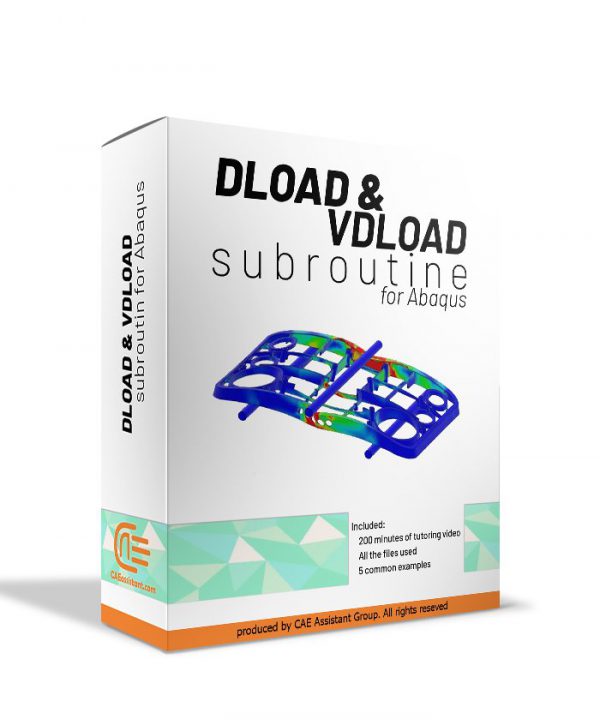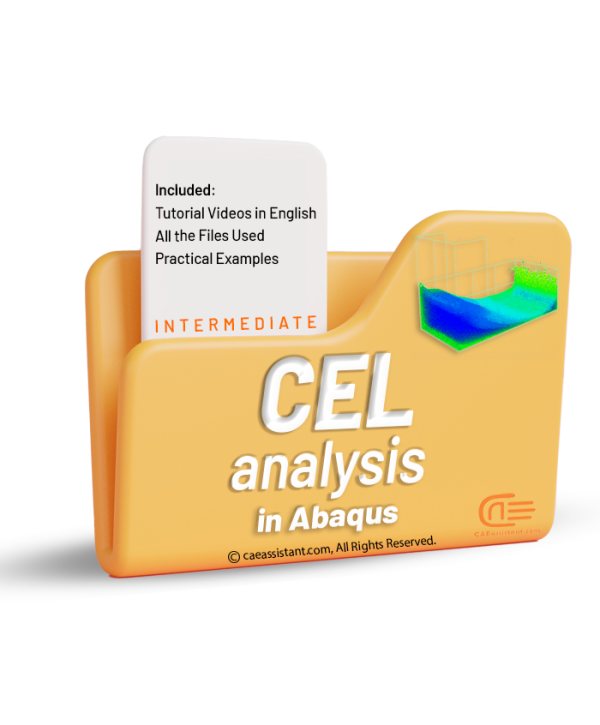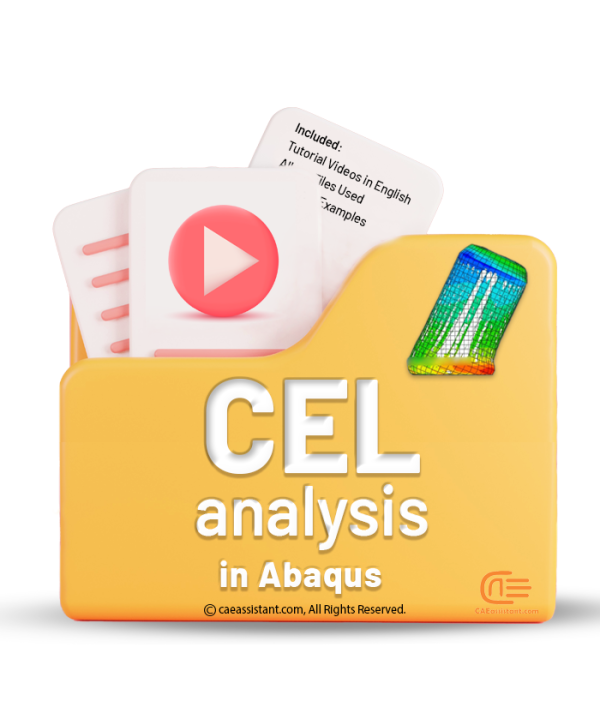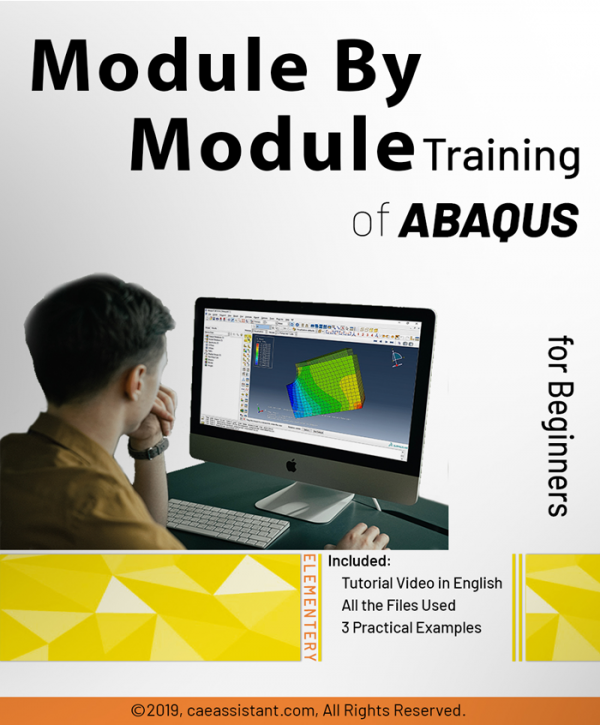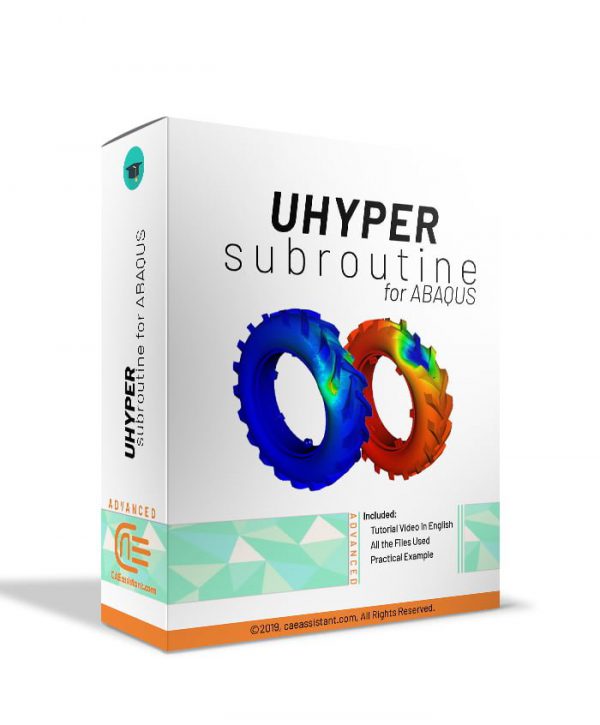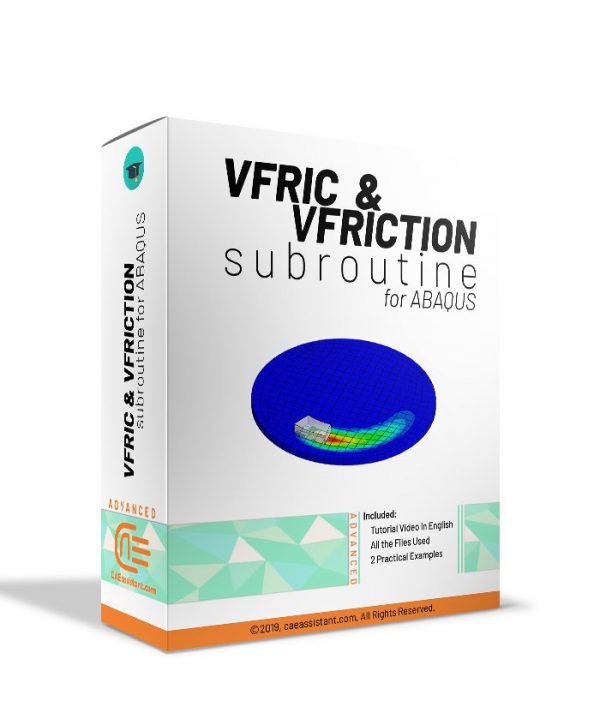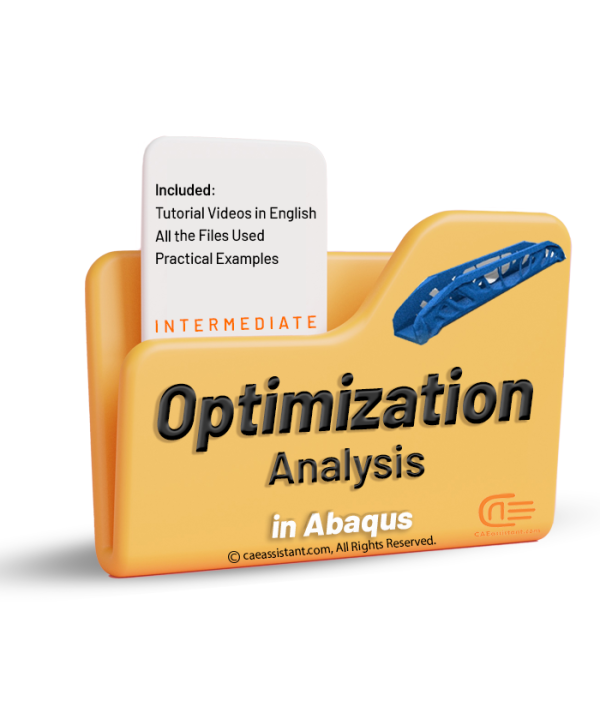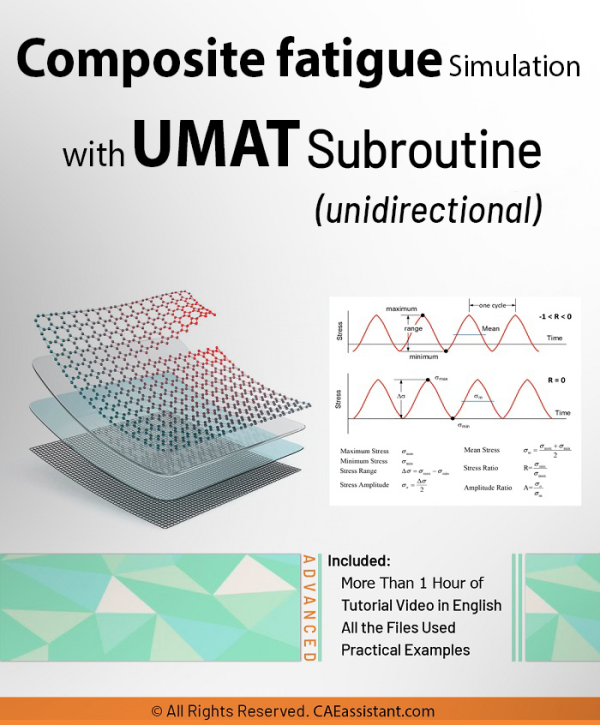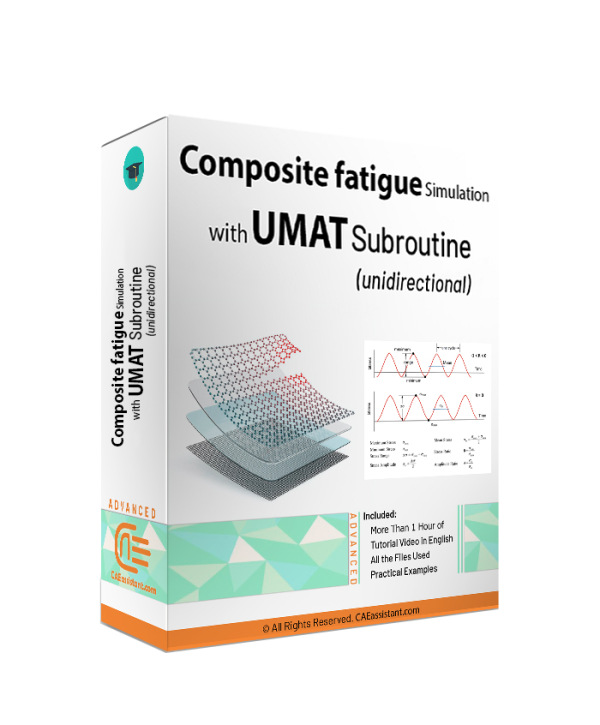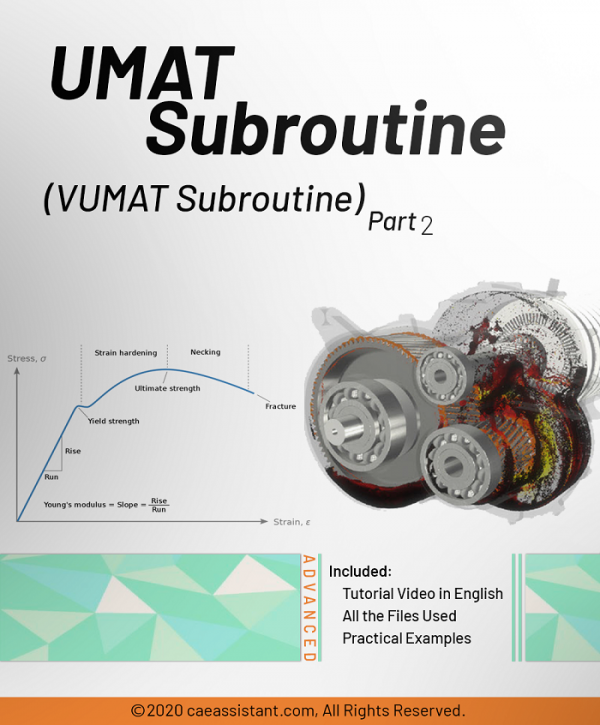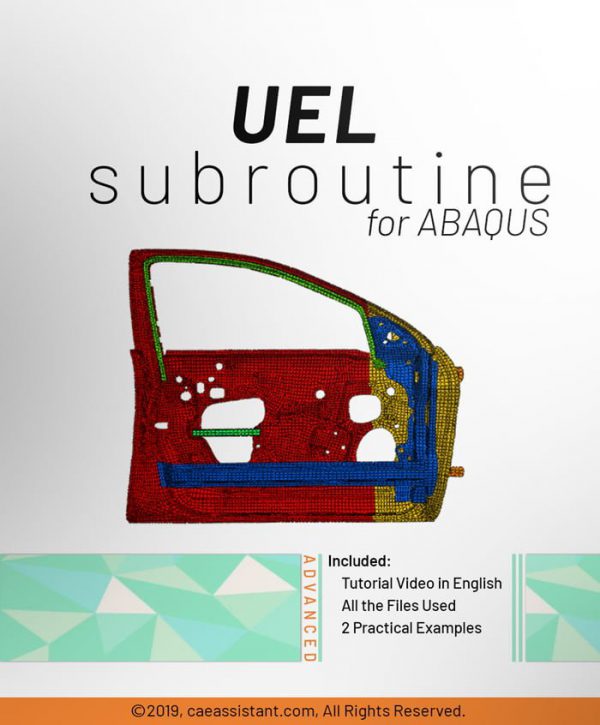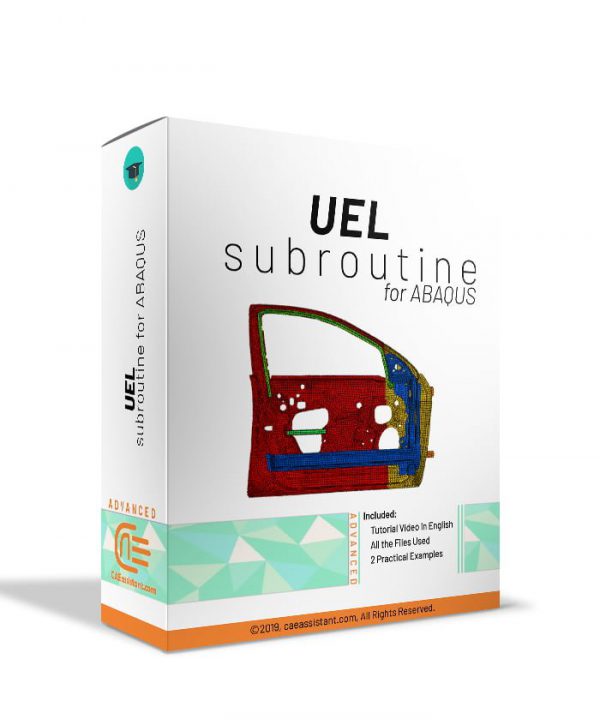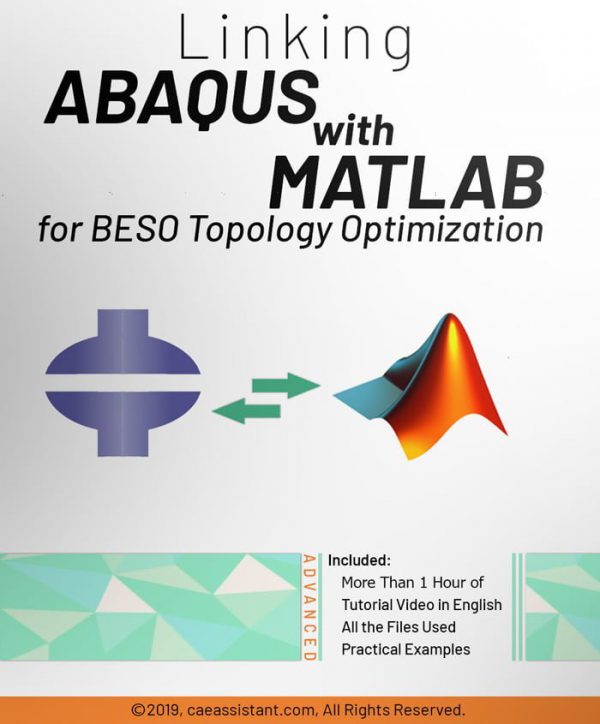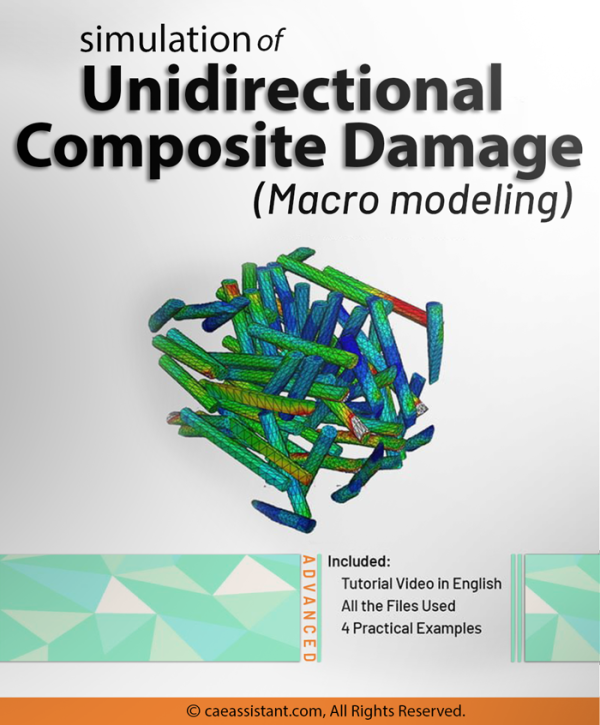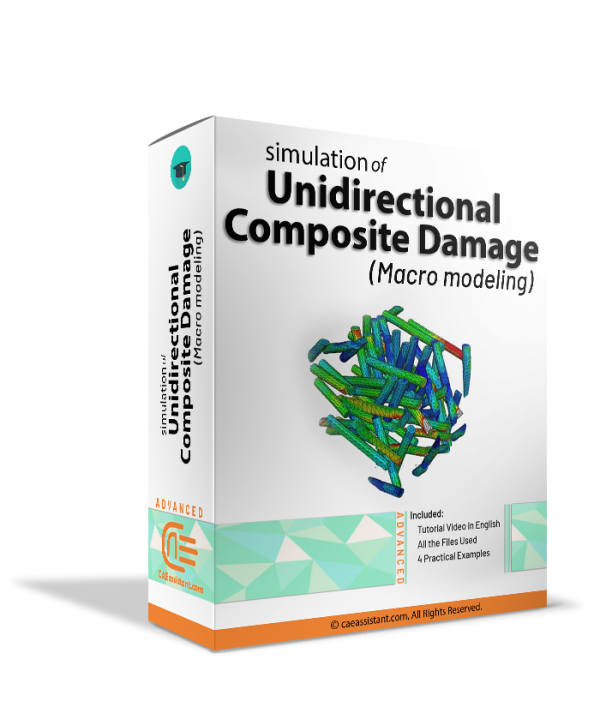ABAQUS
Analysis of Heat Transfer in Abaqus
This Analysis of Heat Transfer in Abaqus package includes workshops that help you to fully learn how to simulate the temperature distribution and heat flux in solids under thermal loads. This tutorial package enables you to model thermal responses including all the modes of heat transfer, namely conduction, convection and radiation. The subjects such as using film conditions to simulate the convective heat transfer, the dissipation of the frictional heat generated, thermomechanical analysis and etc. are covered in this package
Professional Package
As a professional Abaqus user, you have probably faced cases where you have to move meshes and elements during analysis. For example, there is such a need in the wearing process. In addition, to define the properties of materials based on advanced theories of elasticity or plasticity, you need programming within the software. Sometimes you may need to model different types of cohesive or many types of composite materials based on various methods of composite damage. In all these cases, be sure that the professional package will answer you. This package is designed and prepared for you who are professionals and work on the edge of knowledge topics in the field of mechanical engineering and damage mechanics.
Sometimes you may need to use user-defined elements and change element configuration based on theories that you are using; for instance, it is needed to add more integration points in elements. In this case, you can use the UEL package in the “Professional Package”.
💿Abaqus Tutorial for Beginners (Abaqus Tutorial for Civil Engineering)
In the present Abaqus tutorial for civil engineering package, we, "The CAE Assistant", have presented all the Abaqus basic skills that a civil engineer needs when he/she wants to use his/her engineering knowledge in computer-aided designing. Abaqus tutorial for civil engineering covers all your need to simulate concrete, reinforcements, buckling, frequency, damage, composite, cohesive and more topics related to Abaqus structural analysis tutorial. You can watch the demo video for more information.
Golden Package
If you are a graduate or Ph.D. student, if you are a university professor or an expert engineer in the industry who deals with simulation software, you are definitely familiar with the limitations of this software in defining the material properties, loading or meshing, interaction properties, and etc. You have certainly tried to define the properties of materials based on advanced fracture theories in finite element software and are familiar with their limitations and problems.
Now, here is your solution. Start writing subroutines in finite element software and overcome the limitations. With the tutorials in the Golden Package, you will learn how to write 8 subroutines in Abaqus software professionally.
ABAQUS Projects Package
If you need common industrial simulations in the fields of forming, fracture, explosion, impact, etc., this package can provide you with comprehensive training along with an instructional video file and software file. You can quickly meet your educational needs in learning the elementary and intermediate level of Abaqus software using this package.
3D continuum Abaqus HASHIN progressive Damage for composite materials (VUMAT Subroutine)
This tutorial teaches how to simulate damage in 3d continuum composite materials in ABAQUS. As you know, Abaqus does not have any material model for 3d composite materials. So, the user needs to write a customized subroutine to simulate damage initiation and progressive damage for composite materials in ABAQUS. In this package, one of the most practical damage initiation criteria (Hashin) is used to detect failure. It should be mentioned that this subroutine includes gradual progressive damage based on the energy method. This complex subroutine could be used for static and dynamic problems.
Simulation of Fracture in Abaqus
Essential Package
In this package, you can get comprehensive training of the following very useful four subroutines at a lower cost. In this package, more than 9 hours of practical training in the form of videos, PowerPoint, and workshops are provided.
During the years of our activities, many students and professors have received these 5 practical packages from us, and we decided to offer this popular package in the form of the “Essential Package” at a reasonable price.
We assure you that by providing this package, you will be answered to how to define the properties of complex materials or complex loads and contacts very quickly and will save you a lot of time. Because in the training workshops of these packages, there are several practical examples for using these subroutines that can make you a professional in writing them quickly.
Simulation of forming in ABAQUS
The forming in Abaqus is one of the most important manufacturing processes that can be used for producing different components. In this package, you will learn how to simulate the forming process in Abaqus and you can see the behavior of the material along this process. This package contains some examples that cover rolling, hydroforming, extrusion, ECAP, Cold forging, and drilling processes.
Notice: You can access this package 3 days after purchase.
Simulation of impact in ABAQUS
Impact in Abaqus is one of the most important mechanical tests used to check safety before construction. Due to the expansion of the use of this test in the industry, including the automotive industry, the importance of the issue has increased. In this package, by presenting 7 workshops, we try to teach you most of the capabilities of Abaqus software for this widely used topic.
Introduction to USDFLD and VUSDFLD Subroutine
In this usable tutorial, the material properties can change to an arbitrary dependent variable. One of the most important advantages of this subroutine is simplicity and applicability. Various and high usage examples are unique characteristics of the training package.
This training package includes 5 workshops that help you to fully learn how to use USDFLD and VUSDFLD subroutines in Abaqus software. By means of these subroutines, you will have expertise redefine field variables at a material point by the solution dependence of standard and explicit, respectively.Abaqus DLOAD Subroutine and VDLOAD Subroutine
This training package helps Abaqus users to prepare complex DLoad and VDLoad subroutines. With the help of these workshops, you can get acquainted with the basic and comprehensive way of DLoad and VLoad subroutine writing and their applications. By viewing this package as an engineer, you can do basic projects with complex loads.
CEL Analysis in Abaqus
Module by module Abaqus Training
If you are new to Abaqus software and the topic of finite element analysis, you definitely need to get acquainted with the user interface of this software and the general features of each module.
In this software, we perform different simulation steps in the following different modules and at the end, we receive the analysis results from the software solver.
In this package, you will learn how to work with the software in each module and perform your simulation in each module properly.
UHYPER Subroutine in ABAQUS
Introduction to VFRICTION and VFRIC Subroutines in ABAQUS
This tutorial help you in cases where the classical Columbian equations are more complex and cannot be implemented by the graphical ABAQUS environment. This package introduces and teaches how to write these two subroutines. This introduction contains explaining different optional and mandatory parameters of VFRICTION and VFRIC subroutines.
Optimization in ABAQUS Analysis
This tutorial teaches how optimize topology of a model in ABAQUS. Structural optimization is an iterative process that helps to improve designs and produce parts and components that are lightweight, strong and long-lasting.
Topology optimization begins with an initial design, which is assumed to be the maximum physical extent of the component, and determines a new material distribution by changing the density and the stiffness of the elements in the initial design while continuing to satisfy the optimization constraints. In this package different workshops to implement topology optimization are used.
Composite Fatigue Simulation with UMAT Subroutine in ABAQUS (unidirectional)
The composite fatigue training package completely teaches how to simulate and analyze a fatigue composite model with the help of UMAT Subroutine in Abaqus software. In this training package, we have provided all the files needed for your training, including articles, theories, how to write subroutines, and software settings.
Advanced UMAT Subroutine (VUMAT Subroutine) – Abaqus UMAT tutorial
This training package helps Abaqus users to prepare complex UMAT and VUMAT subroutines. This Abaqus UMAT tutorial package is suitable for those who are familiar with subroutine or want to learn UMAT/VUMAT subroutine Professionally. Equations for computational plasticity based on kinematic stiffness are also discussed. In addition, metal damage has been implemented based on Johnson Cook's model.
Watch Demo
Introduction to UEL Subroutine in ABAQUS
UEL stands for User-defined Elements. When you have a finite element analysis that requires an element type that doesn't exist in the Abaqus element library, you must write a UEL subroutine. Or, when you want to define various element shape functions, the UEL would be the best choice. This subroutine is one of the most sophisticated in the Abaqus and is intended for advanced users. With this tutorial package, you can become an advanced user and learn how to write such a complex subroutine. This package contains two workshops: writing a UEL subroutine for a planar beam element with nonlinear section behavior and writing a UEL subroutine for a beam element with specific boundary conditions and loading.
Watch Demo
Linking ABAQUS and MATLAB
This package presents a technique to bridge the gap between ABAQUS and MATLAB. It is especially useful when you want to set up an automated optimization loop between these two PC applications. The key points for linking are presented in a case study that is about topology optimization of an end-fixed 2D plate by the BESO approach.
Customized Package
Simulation of Unidirectional Composite Damage in ABAQUS
This package is about Unidirectional Composite Damage tutorial and applies various theories to initiate and progress damage in composite materials based on ABAQUS capabilities for different elements. As you know, according to the modeling done by the micro or macro method, the way of defining the Abaqus composite damage completely follows the separate method in ABAQUS. This training package is customized for Abaqus composite macro modeling. There are 5 different unidirectional composite examples to help you master unidirectional composite simulations and Abaqus composite laminate damage modeling. You can see the examples in the syllabus below.
ABAQUS FEA Training (Free cantilever beam tutorial)
Introduction to ABAQUS tutorials are a series of example-based training videos and in this course as the first step of this series, we’re going to simulate an I-shaped beam with different types of loads and boundary conditions and in static and dynamic methods to compare the results with the theory. Watch Demo


